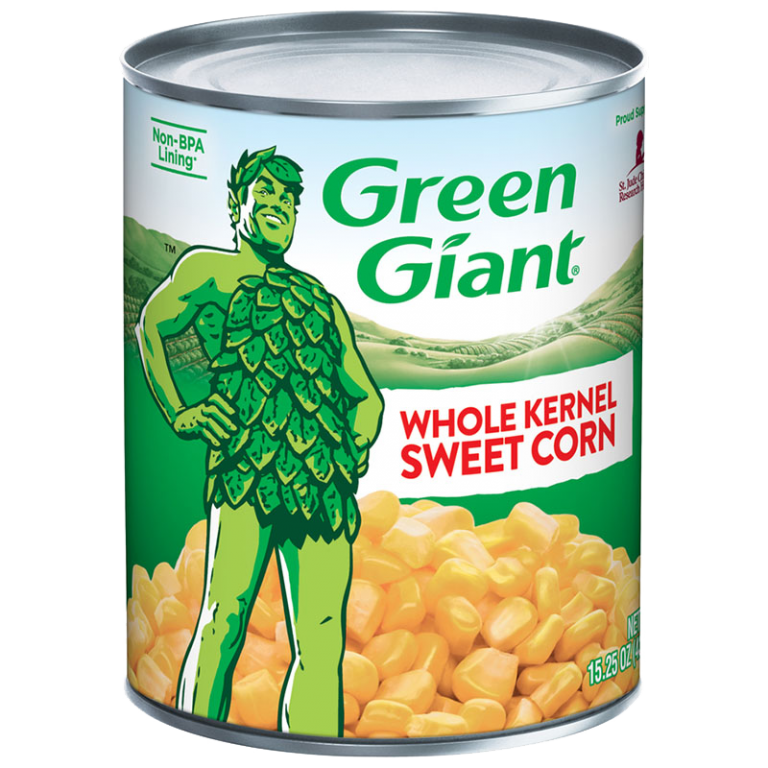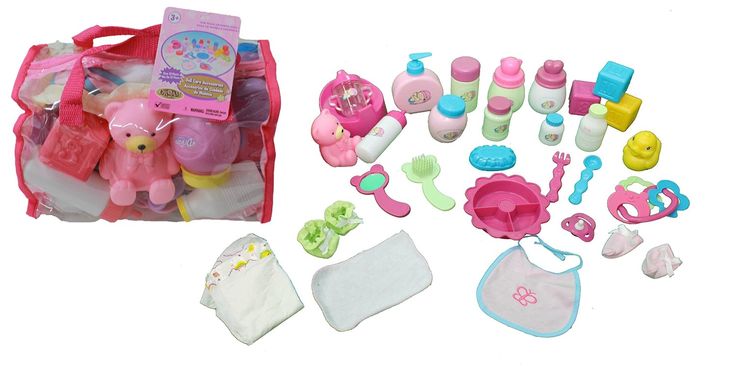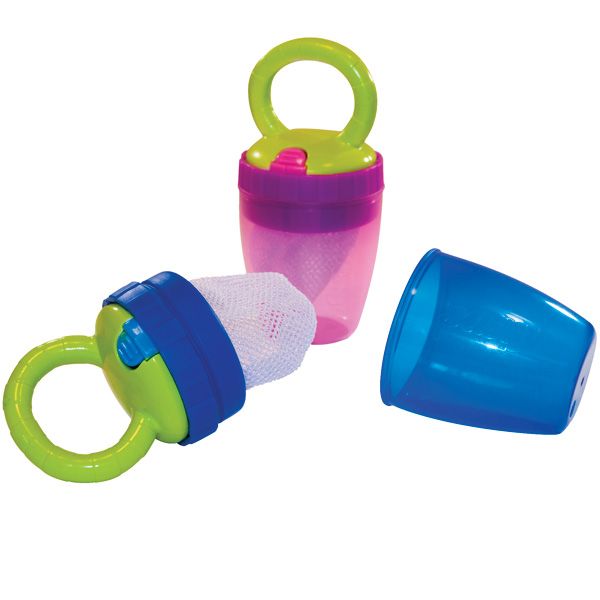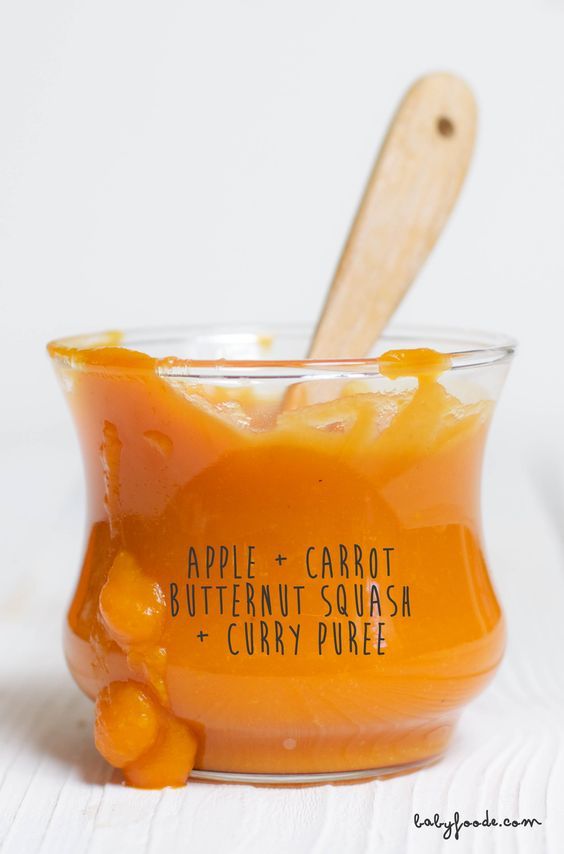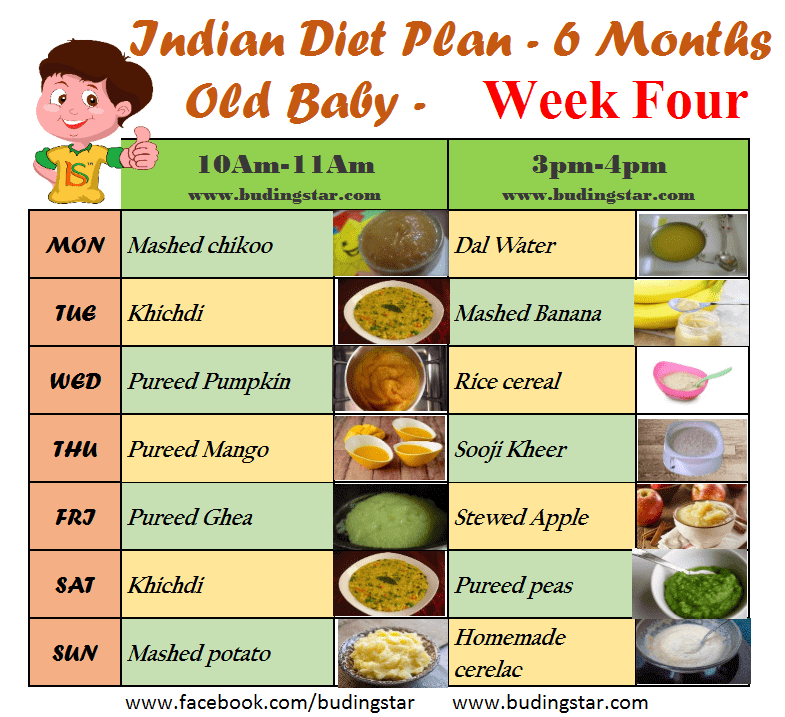Best foods to feed baby first
Dos and Don'ts for Baby's First Foods
Wavebreak Media/Thinkstock
Breastfeeding has been shown to improve infant, child and maternal health outcomes and help control healthcare costs, but how long should breastfeeding last and when should parents introduce solid foods?
The Dietary Guidelines for Americans recommend exclusive breastfeeding, meaning the infant receives only breast milk, during the first six months of life for optimal nutrition and health benefits.
Once solid foods are introduced, health professionals recommend continuing breastfeeding through 12 months of age and, after that, as desired by mother and baby. Introducing your baby to solid foods is an exciting milestone. When you start introducing children to the world of solid foods, you are helping them shape their relationship with food and establish a healthy eating style. The timing for introducing solid foods will depend on the infant, but it is not recommended before the age of four months or after the age of six months.
Not sure how to get your baby started on solid foods? Consider these helpful tips.
Is Your Baby Ready to Transition?
Each child's readiness for solid food depends on their own rate of development. Signs a baby may be ready to start solid foods include sitting up with minimal support, demonstrating good head control, bringing objects to the mouth or grasping at small objects. Check with your pediatrician before starting solid foods.
Getting Started With Solids
Solid foods may be introduced in any order. However, puréed meats, poultry, beans and iron-fortified cereals are recommended as first foods, especially if your baby has been primarily breastfed, since they provide key nutrients. Only one new single-ingredient food should be introduced at a time.
Softer textures are very important when first introducing foods. Infants usually start with pureed or mashed foods around six months. As infants develop chewing and motor skills, they are able to handle items like soft pieces of fruit and finger foods.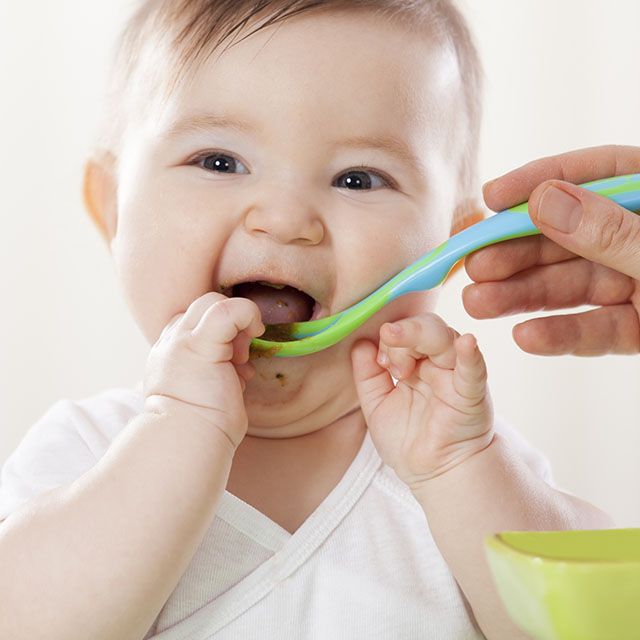 As the child ages, a variety of healthful foods is encouraged.
As the child ages, a variety of healthful foods is encouraged.
Weaning From Breastfeeding
When deciding if you should wean your baby to a bottle or a cup, consider their developmental readiness. Between 7 and 8 months, most infants will drink small amounts of liquid from a cup or a glass when someone else holds it. Older babies and toddlers often have the coordination to drink fluids from a cup by themselves.
If your baby is under 12 months of age and you are not continuing to breastfeed, wean from breast milk to iron-fortified infant formula. If your baby is 12 months or older, whole cow’s milk is appropriate.
Food Safety Do’s and Don’ts
Food safety concerns for infants and toddlers include food allergies, choking and risks for foodborne illness. Keep the following safety tips in mind:
Do talk with your pediatrician about the risk of food allergies. Introducing one new food at a time, every several days, allows time to monitor for allergic reactions.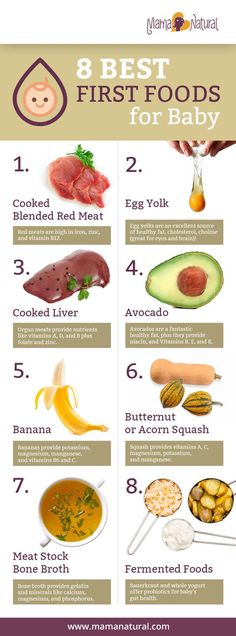 Current evidence does not indicate needing to wait beyond 4 to 6 months before introducing potential allergy-causing foods such as eggs, dairy, soy, peanuts and fish. In fact, introducing peanut-containing foods as early as 4 to 6 months of age may help prevent a peanut allergy. The Dietary Guidelines for Americans recommends introducing potentially allergenic foods when other complementary foods are introduced to an infant’s diet. Parents with concerns about food allergies should discuss how to include these foods with their pediatrician.
Current evidence does not indicate needing to wait beyond 4 to 6 months before introducing potential allergy-causing foods such as eggs, dairy, soy, peanuts and fish. In fact, introducing peanut-containing foods as early as 4 to 6 months of age may help prevent a peanut allergy. The Dietary Guidelines for Americans recommends introducing potentially allergenic foods when other complementary foods are introduced to an infant’s diet. Parents with concerns about food allergies should discuss how to include these foods with their pediatrician.
Don’t feed your baby solid foods from a bottle. It can be a choking hazard and despite a popular misconception, putting cereal in a baby's bottle won't help with sleeping through the night. Other foods that are considered to be choking hazards are listed below.
Do supervise your child while eating. Infants should be able to sit upright and face forward when you first introduce solid foods. This makes swallowing easier and choking less likely.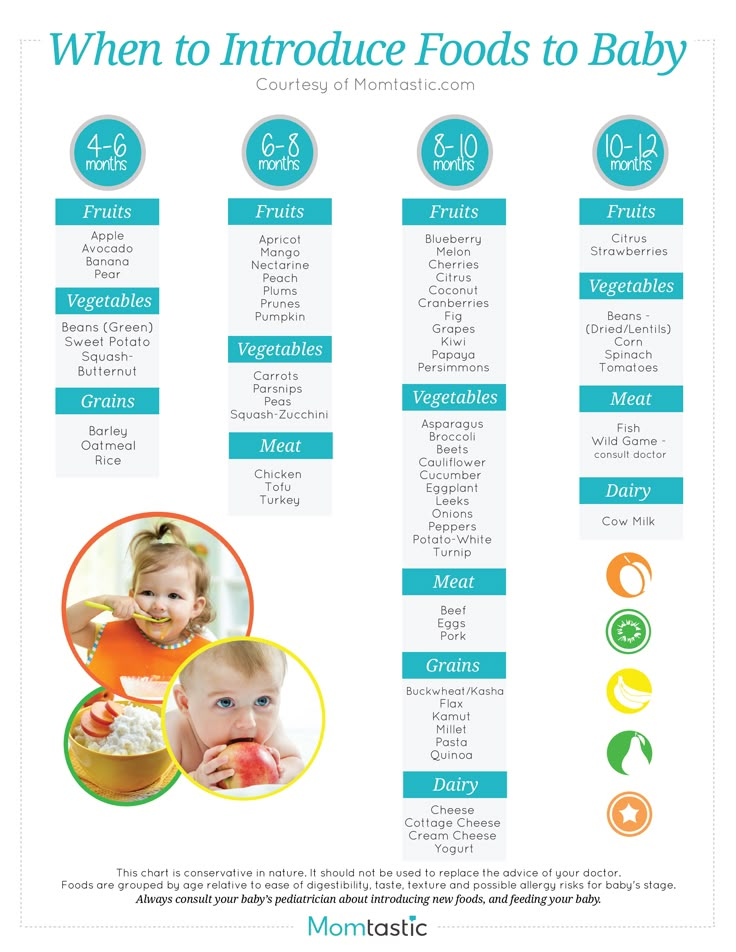
Don’t feed directly from the jar of food but instead spoon some food into a separate dish first. Feeding directly from the jar may introduce bacteria from your baby's mouth to the spoon and back into the food, creating a food safety issue.
Don’t feed honey to children under 12 months of age due to the risk of foodborne illness.
Examples of appropriate solid foods listed by age:
6 months:
- Well-cooked and pureed meat, poultry or beans
- Ground, cooked, single-grain cereal or infant cereal with breast milk or formula
- Cooked and pureed vegetables
- Mashed banana or avocado
9 months:
- Well-cooked, minced or finely chopped meat, poultry or beans
- A variety of cooked vegetables cut into small, ½ inch pieces, such as squash and green beans
- Sliced and quartered bananas or small pieces of other soft fruits
12 months:
- Soft, shredded meat, poultry or fish
- Small pieces of cooked vegetables
- Small pieces of soft, easy to chew fruits
- Mixed food dishes the family is eating in appropriately sized pieces
Not recommended for those under 4 years of age due to the risk of choking:
- Popcorn and whole kernel corn
- Nuts and seeds
- Large chunks of meat, poultry and cheese
- Candy, gum drops and jelly beans
- Hard, raw fruits or vegetables such as apples, celery and carrots
- Whole grapes and cherry tomatoes, unless cut into quarters
- Hot dogs, unless cut into strips and age appropriate, bite-size pieces
- Sticky foods, such as peanut butter, which can get stuck in the back of the mouth – peanut butter is okay if spread thinly on bread
For toddlers and preschoolers, chop grapes, meat, poultry, hot dogs and raw vegetables and fruits into small pieces (about ½ inch or smaller).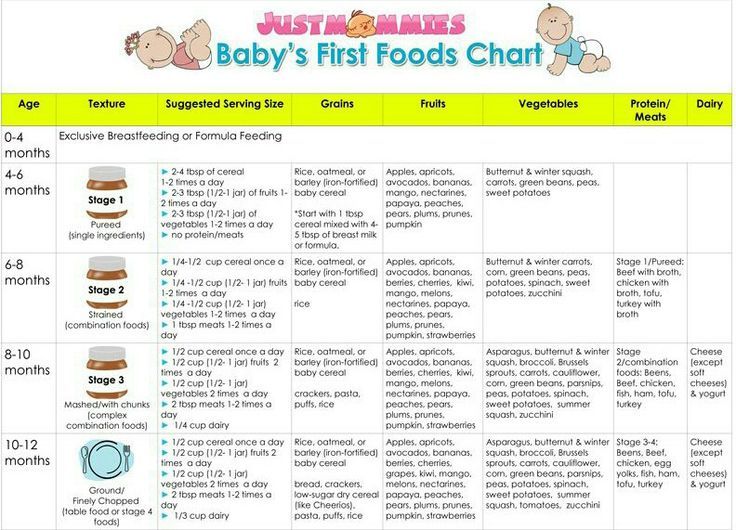
Nurturing Healthy Relationships with Food
Establishing a positive feeding relationship during infancy can have lifetime benefits. Keep in mind that children are responsible for how much and whether they eat so always wait for your baby to pay attention to each spoonful before you feed them. Don't be afraid to let your baby touch the food in the dish and on the spoon. You wouldn't want to eat something if you didn't know anything about it, would you? In addition, know the cues that your baby is done eating. A common cue babies are full is head turning.
Whatever happens, don't get discouraged and enjoy the experience. With a little patience and creativity, you can make your baby's first solid food eating experience fun for everyone involved!
Best First Foods for Baby (purees & BLW)
These 10 Best First Foods for Baby are perfect either as a baby food puree or as finger foods for baby-led weaning. Full of essential nutrients for a growing baby, these irresistibly delicious recipes are great for babies 6+ months of age. What’s more, this guide also contains 6 tips for getting started and more than 30 easy-to-follow recipes!
What’s more, this guide also contains 6 tips for getting started and more than 30 easy-to-follow recipes!
Medically reviewed by Jamie Johnson, Registered Dietitian Nutritionist (RDN), and Lauren Braaten, Pediatric Occupational Therapist (OT).
Best First Foods for Baby
Looking to serve your baby the best foods right from their very first bite?
Then this guide is for you! Filled with 10 of my all-time favorite foods for baby, all in one place!
These 10 wholesome foods are packed with vital nutrients for a growing baby, are full of flavor, and are hassle-free to make into a simple baby food puree or finger food for baby-led weaning. Plus, the ingredients are relatively easy to find in any grocery store.
10 of the Best First Foods for Baby- Apple
- Broccoli
- Salmon
- Egg
- Sweet Potato
- Yogurt
- Avocado
- Banana
- Squash
- Green Beans
Let’s take a closer look into each of these mouthwatering foods, shall we?
First time making homemade baby food? Then, I would suggest that you start by reading my very in-depth Guide on how to Make Homemade Baby Food – which goes over all the important information such as the best cooking tools to have on hand, safe storage, how to know when baby is ready for solids, how to introduce purees, the best first foods for baby, and more! If you are doing Baby-Led Weaning, then be sure to check out my Complete Guide to Baby-Led Weaning – which covers what exactly is baby-led weaning, to every parent’s concern of baby-led weaning and choking, this guide goes over it all. I will also share how to know when baby is ready for BLW, the top 10 best first foods, a helpful sample blw feeding schedule, helpful tools to have on hand, and much much more! You can also check out my best-selling cookbook for even more information and recipes!
I will also share how to know when baby is ready for BLW, the top 10 best first foods, a helpful sample blw feeding schedule, helpful tools to have on hand, and much much more! You can also check out my best-selling cookbook for even more information and recipes!
Best Foods for Baby Video
Watch this video to see how easy these 10 foods are to make for your baby.
When Is Your Baby Ready For Their First Bite?
Whether you decide to go with traditional weaning (purees), baby-led weaning or a combination of both, look for these readiness signs in your baby:
- Around 6 months of age
- Sitting with minimal assistance
- Good control of their head and trunk
- Bringing hands and toys to their mouth
- Appears interested in food, possibly by reaching for or leaning forward towards food
Before you start weaning your baby, you should consult with your pediatrician to make sure your child is developmentally ready.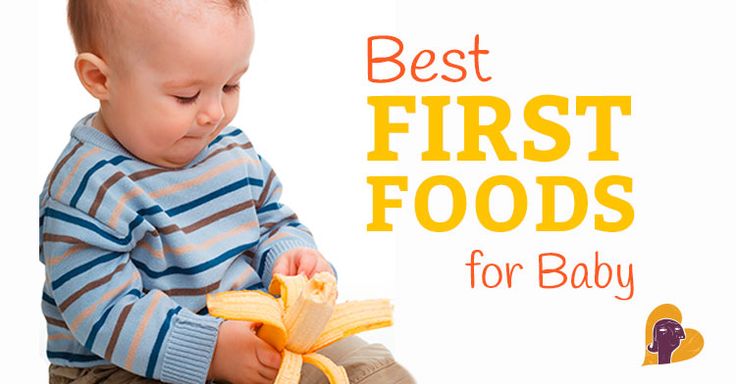
Tips for Getting Started
- Start Slowly – Start by serving a small amount of one food item to your baby once or twice a day to see how they will react. If they are reaching for more, then, by all means, give them more. If they keep tossing it on the floor or refusing to open their mouths, then take that food away and try again in a couple of days. It takes some time before they are eating entire meals.
- Cut Up Finger Foods – To avoid choking hazards, make sure you are cutting finger foods for baby-led weaning into long, 2-3 inch strips or small, mashable, pea-sized pieces. Usually, babies starting baby-led wearing prefer using their palmar grasp (holding onto the long 3″ piece of food), but you can also cut the food both ways to see which one your baby prefers.
- Be Patient – It might take a while for your baby to get into their eating groove. They may also love the idea of eating but get more food on the floor than in their mouths.
 Babies might even seem interested in food but then turn their heads every time a spoon comes near their lips. It’s frustrating, I get it! But keep on serving healthy foods and be patient.
Babies might even seem interested in food but then turn their heads every time a spoon comes near their lips. It’s frustrating, I get it! But keep on serving healthy foods and be patient. - Eat as a Family – Whether you are doing purees or baby-led weaning, eating as a family promotes healthy food habits right from the start. By eating with your baby, you show them how to bring food from a plate to your mouth, chew, and swallow. And when babies see their mom or dad eating the same thing as they are, they are more likely to eat it!
- Mix It Up – Please do not take these 10 foods and serve them to baby all at once and for every meal. Sure, they are loaded with nutrients and flavor for a growing baby. But babies also need to be exposed to various fruits, veggies, grains, and meats. So mix things up and try to serve them different items each week.
- Add Seasoning – I definitely recommend serving food with spices, herbs, and added healthy fats (refined coconut oil, high-quality olive oil, or butter).
 Not only do healthy fats aid in brain development and keep babies full up for longer, but they also make food taste way better! Fats are also needed to help absorb the fat-soluble vitamins A, D, E, and K.
Not only do healthy fats aid in brain development and keep babies full up for longer, but they also make food taste way better! Fats are also needed to help absorb the fat-soluble vitamins A, D, E, and K.
Purees vs. Baby-Led Weaning
Regardless of what you read or hear, there is no right or wrong way to feed your baby.
Purees might work better for your family because you can prep a ton of purees in an afternoon and have a freezer stash of food ready for your baby to eat anytime they are hungry.
Perhaps Baby-Led Weaning might be a more flexible way to serve food to your baby right alongside everyone else.
Or maybe a combo of purees and baby-led weaning would work best.
Either way, it’s important to remember that this stage of feeding is all about exposure to new flavors and textures of foods.
So, you do you!
Again, there is NO right way to feed your baby! Play around and find out what works best for both your baby and family and go with it.
Kitchen Tools
Here are my favorite kitchen essentials to make the best homemade baby foods for your baby! These kitchen tools will help make the process of cooking, blending, and freezing baby food hassle-free. You can find a full list of my favorite baby food-making tools in my online Shop.
- Blender or Food Processor
- Freezer Storage Tray
- Fridge Storage Containers
- Stasher Bag
- Baking Sheet
- Steamer Basket
- Medium Saucepan
- Reusable Pouches
- easy to hold fork and spoon
- GOOtensils
- High Chair
- Suction Bowl and Spoon Set
- Bib with Food Catcher
Avocados are often called one of nature’s superfoods because they contain so many nutrients a person needs to survive and thrive.
Benefits of Avocado for Baby
They are packed with all the B vitamins (minus B12), vitamin C, a wide array of minerals and are high in brain-building omega-3 fatty acids. In fact, 88% of an avocado is made up of healthy fats, helping us absorb certain fat-soluble vitamins, control blood sugar, and support a healthy cardiovascular system. In other words, avocados are so nutritious; they are also ideal as the first food for your baby.
In fact, 88% of an avocado is made up of healthy fats, helping us absorb certain fat-soluble vitamins, control blood sugar, and support a healthy cardiovascular system. In other words, avocados are so nutritious; they are also ideal as the first food for your baby.
How to Make Avocado Baby Food Puree
Make sure to read the recipe card below for full ingredients and instructions!
- Peel and pit a quarter of a ripe avocado and place it on a cutting board.
- With the back of a fork, mash the avocado until smooth.
- If needed, you can add a teaspoon or two of formula or breast milk to make the puree extra smooth and creamy.
How to Serve Avocado for Baby-Led Weaning
Make sure to read the recipe card below for full ingredients and instructions!
- Cut a slice of avocado off of the pit.
- Using a small knife, cut into the peel 1/3 of the way up the slice of avocado until you get to the flesh.
- Peel off 2/3 of the peel and hand your baby the peel side of the avocado.
 This provides a nice handle for babies to hold while they eat the avocado.
This provides a nice handle for babies to hold while they eat the avocado.
Want more avocado recipes? Get 4 more ways to serve avocado to baby here!
EggEggs are another amazing first food for babies and can be served any time of the day.
Benefits of Eggs for Baby
Egg yolks are packed with choline, an important nutrient for your baby’s brain development, and the whites are excellent sources of protein. Pasture-raised eggs are a good course of brain-boosting Omega-3s.
How to Make Egg Baby Food PureeMake sure to read the recipe card below for full ingredients and instructions!
- Hard-boil an egg, then peel away the shell and white part.
- Place the cooked egg yolk on a cutting board or baby-safe plate.
- Using the back of a fork, mash the egg yolk until smooth, adding a teaspoon or two of breast milk or formula if needed to make it creamy.
Make sure to read the recipe card below for full ingredients and instructions!
- Peel a hard-boiled egg and cut it into quarters the long way.
 Scrambled eggs, plain omelets, or egg roll-ups also work great as finger food for babies.
Scrambled eggs, plain omelets, or egg roll-ups also work great as finger food for babies. - Place the egg quarters on baby’s highchair tray or in a bowl.
Sweet Potato
Sweet potatoes are also at the top of my list when it comes to the first foods to introduce to babies. The nutritional value of sweet potatoes is outstanding, and their naturally sweet taste makes them easy to introduce to your baby.
Benefits of Sweet Potato for Baby
Sweet potatoes are also high in beta-carotene and vitamin C and the ultra-important electrolyte mineral, potassium! Sweet potatoes also contain good levels of vitamin E, calcium, and folate. Due to their high fiber content, sweet potatoes helps support a healthy digestive tract and promote regular bowel movements for your baby.
How to Make Sweet Potato Baby Food Puree
Make sure to read the recipe card below for full ingredients and instructions!
- Peel and chop 1-2 sweet potatoes.
- Place them in a steamer basket over boiling water and steam for 10-12 minutes or until tender when pricked with a fork.

- Add cooked sweet potatoes to a food processor or blender, and puree for 1-2 minutes until completely smooth, adding water, fresh breast milk or formula, in 1/4 cup increments if needed. I had to use 1 cup of water for the puree above.
- For more sweet potato recipes your baby can enjoy, visit these posts: Sweet Potato + Curry Baby Food Puree, Sweet Potato + Thyme Baby Food Puree, and Sweet Potato with Coconut Milk Baby Puree.
How to Serve Sweet Potatoes for Baby-Led Weaning
Make sure to read the recipe card below for full ingredients and instructions!
- Peel and slice the sweet potato into long strips that are half an inch thick.
- Place wedges a steamer basket and steam for 8-10 minutes or until tender when pricked with a fork. Remember, you want them soft but not overcooked. Overcooked sweet potatoes tend to fall apart when babies fist them.
- Let them cool and serve to baby. This recipe will last 5 days in the fridge.
Want more sweet potato recipes? Then head over to Sweet Potato for Baby – 6 Delicious Ways
Apples
Apples are a yummy, nutrient-dense first food for babies too.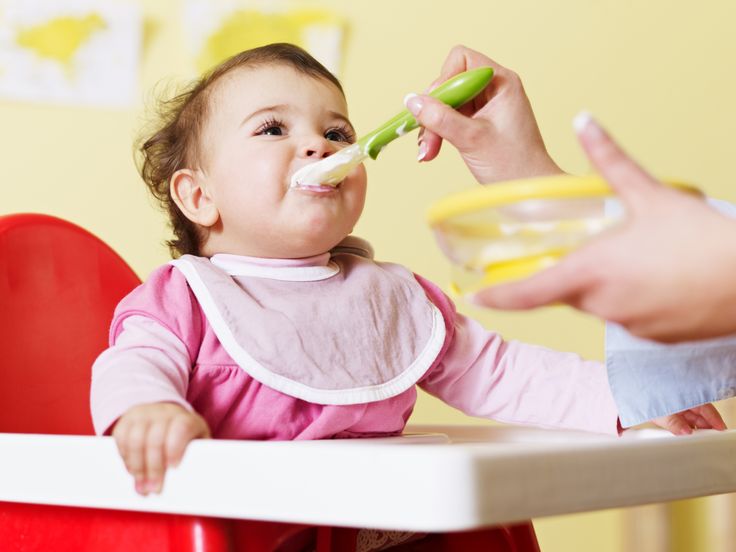 They’re easy to digest, high in immune-boosting nutrients, and perfectly sweet on their own.
They’re easy to digest, high in immune-boosting nutrients, and perfectly sweet on their own.
Benefits of Apples for Baby
We’ve all heard the saying “An apple a day…” well, there may be some truth to this — apples are high in polyphenols and phytonutrients, which are potent antioxidants that help protect babies and kiddos from disease and illness. In addition to antioxidants, apples contain insoluble and soluble fiber, helping protect babies from diarrhea and constipation.
How to Make Apple Baby Food Puree
Make sure to read the recipe card below for full ingredients and instructions!
- Peel and chop 2-3 apples and place them in a steamer basket over boiling water and cook for 8-10 minutes or until tender when pricked with a fork.
- Transfer the apples to a blender and puree for 1-2 minutes or until smooth, adding liquid (water, fresh breastmilk, or formula) in 1/4 cup increments if needed.
- For more amazing apple puree recipes, check out Apple + Cinnamon Baby Food Puree, Apple + Clove Baby Food Puree and Apple + Coconut Milk Baby Food Puree.

How to Serve Apples for Baby-Led Weaning
Make sure to read the recipe card below for full ingredients and instructions!
- Peel and slice an apple and place in a steamer basket over boiling water for 6-8 minutes or until just tender when pricked with a fork. You want the slices soft but not falling apart.
- Let them cool and serve to baby. You may also add a pinch of cinnamon to the apple slices before serving, but this is optional. Steamed apple slices will last in the fridge for 3 days.
- Add a squeeze of lemon juice to prevent them from browning.
Broccoli
Broccoli is definitely one of the best first food choices for your baby.
Benefits of Broccoli for Baby
This green cruciferous veggie has been shown to lower cholesterol, aid in detoxification, rebuild vitamin D stores, and help combat inflammation. Steaming ensures the broccoli retains the most nutrients and that it won’t become too mushy — a characteristic many kiddos frown upon.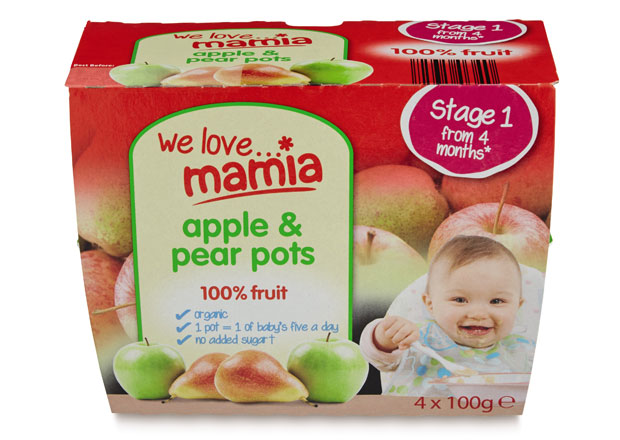
How to Make Broccoli for Baby Food Puree
Make sure to read the recipe card below for full ingredients and instructions!
- Place 2 cups of broccoli florets in a steamer basket over boiling water and steam for 10-12 minutes until tender.
- Transfer to a blender and puree for 1-2 minutes, adding 1/4 cup of liquid (water, fresh breastmilk, or formula) until you have a creamy puree.
- Here are some more amazing broccoli recipes: Broccoli + Chives Baby Food Puree and Broccoli + Olive Oil Puree Baby Food Recipe.
How to Serve Broccoli for Baby-Led Weaning
Make sure to read the recipe card below for full ingredients and instructions!
- Place a cup of broccoli florets into a steamer over boiling water and steam for 8-10 minutes or until tender when pricked with a fork.
- Let them cool and serve to your baby in florets or chopped up into pea-sized pieces. Here is a recipe for my fav roasted broccoli for baby.
Wild-caught salmon is one of the world’s healthiest foods and believe it or not, is a great first food for baby.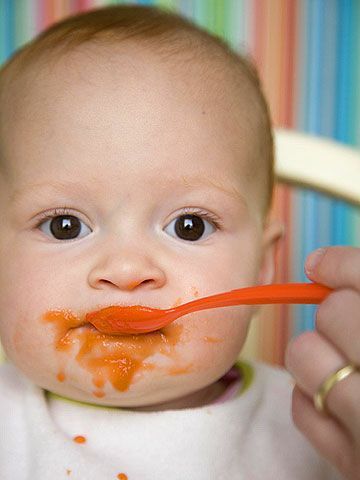
Benefits of Salmon for Baby
This is because it is packed with vitamins and minerals like vitamins D and B-12 and omega-3 fatty acids. In fact, salmon is one of the best sources of omega-3s! Combined, these nutrients help improve bone health, boost brain function, promote a healthy heart, and reduce ADHD symptoms in children.
How to Make Salmon Baby Food PureeMake sure to read the recipe card below for full ingredients and instructions!
- I used grilled salmon as that is what I had on hand, but any cooked salmon would work. Place 1/4 cup of cooked salmon along with 1 cup of cooked sweet potato or squash into a blender and puree for 1-2 minutes, adding 1/4 cup of liquids (water, fresh breast milk, or formula) until smooth.
- You can use any fruit or veggie your baby prefers in this recipe. Adding another veggie to the puree also helps the salmon blend into a nice, smooth puree.
Make sure to read the recipe card below for full ingredients and instructions!
- Flake some cooked salmon onto a baby-safe plate or their high chair tray, making sure to pick off any bones.
 Let your baby eat them with their hand or with this baby-led weaning fork.
Let your baby eat them with their hand or with this baby-led weaning fork.
Yogurt
Plain, whole milk yogurt is a tasty first food for your baby and is great served by itself or mixed into other purees.
Benefits of Yogurt for Baby
Produced by the bacterial fermentation of cow’s milk, yogurt is full of beneficial probiotics that improve digestion and constipation that help keep our gut in good working order. Yogurt is also high in protein (especially Greek or skyr varieties) and calcium, helping our bones and teeth stay healthy and strong.
Whole milk yogurt is recommended over low fat because fat helps with brain development. Plus, fat and protein can help maintain fullness for longer. Yogurt has also been shown to help improve blood sugar control (the plain variety, not the sweetened, fruit, or vanilla flavored) and help reduce total cholesterol levels while increasing our “good” HDL cholesterol. It’s best to avoid any flavored yogurt at this age so your baby does not get too much sugar.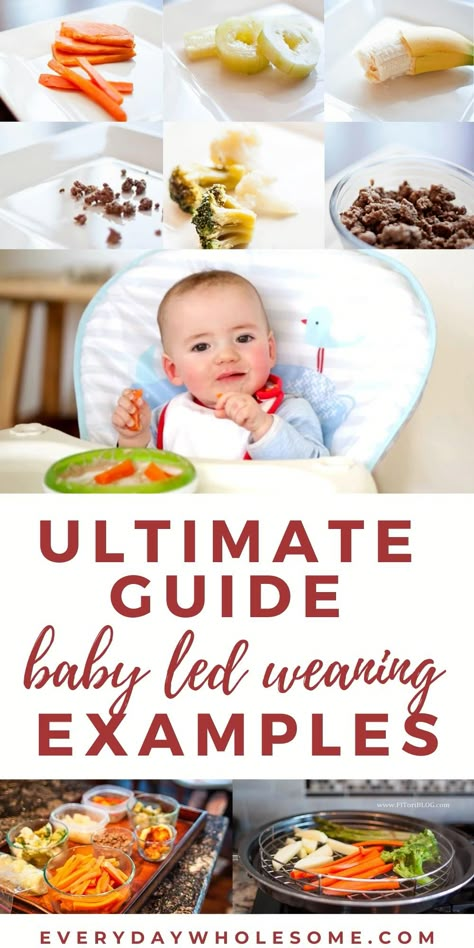 You can also serve your baby plain goat’s milk as a nice alternative to cow’s milk yogurt. I recommend waiting to serve plant-based yogurts to your baby until 7 months, but keep in mind; they will not have the same nutrient profile as dairy yogurts.
You can also serve your baby plain goat’s milk as a nice alternative to cow’s milk yogurt. I recommend waiting to serve plant-based yogurts to your baby until 7 months, but keep in mind; they will not have the same nutrient profile as dairy yogurts.
How to Make Yogurt Baby Food Puree
Make sure to read the recipe card below for full ingredients and instructions!
- Place a small spoonful in a bowl and serve to your baby.
How to Serve Yogurt for Baby-Led Weaning
Make sure to read the recipe card below for full ingredients and instructions!
- Place a small spoonful of yogurt into a bowl, load up this self-feeding GOOtensil with a small amount of yogurt, and hand it to your baby.
NumNum Pre-Spoon GOOtensils
Our favorite spoon for baby! Designed to work great with both purees and soft solid foods, the spoon holds onto the food and makes it easier for baby to self-feed themselves.
View Product
Banana
Bananas and babies are pretty much synonymous.
Benefits of Banana for Baby
Bananas are sweet, mushy, and easy to digest, so they are ideal as first foods for babies. They are a good source of potassium and fiber, and here’s the best part: you don’t have to peel, chop, steam, or puree them. Just peel, pinch with your (clean) finger, and then serve! Spoons are totally optional. Older babies love to squish bananas on their own with a little pincer grasp. But beware of messy banana on bibs, faces, high chair trays, clothing, the floor, the dog, your hair. Oh, bananas! Many a happy baby has gobbled, gulped, and giggled his way through those first delicious bites of bananas! 🍌
How to Make Banana Baby Food Puree
Make sure to read the recipe card below for full ingredients and instructions!
- Take a ripe banana and peel.
- Place half of it on a cutting board, and mash with the back of a fork until it’s rich and creamy.
Make sure to read the recipe card below for full ingredients and instructions!
- Cut a banana in half, and then gently cut about 2 inches from the stem around the banana.

- Peel the top off, but leave the banana attached to give your baby a handle to hold onto.
- Hand your baby the stem part of the banana for them to hold onto while they eat it.
Looking for more banana recipes for your baby? I’ve got you covered: Banana Baby Food – 8 Ways (Puree & Baby-Led Weaning)
Squash
Squash comes in many delicious varieties and is one of the healthiest first food for babies.
Benefits of Squash for Baby
Delicata, Acorn, Hubbard, Kabocha, and Butternut are all part of the winter squash family and are all high in carotenoids, a special class of antioxidants that may help prevent cancer and inflammation. Winter squash may also help regulate blood sugar, reduce the risk of cardiovascular disease, and improve mood, thanks to its high content of mood-boosting Omega-3 fatty acids. Plus, winter squash has a robust, naturally sweet taste that babies will enjoy year-round.
How to Make Squash Baby Food Puree
Make sure to read the recipe card below for full ingredients and instructions!
- Place cubed squash (any variety) in a steamer basket and steam for 10-12 minutes or until tender when pricked with a fork.
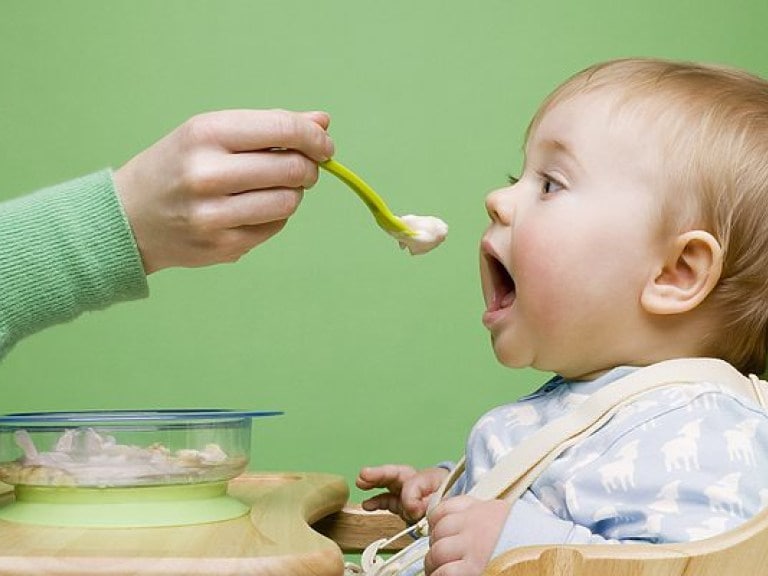
- Transfer to a blender and puree for 1-2 minutes on high, adding liquid (water, fresh breastmilk, or formula) in 1/4 cup increments until creamy. You can use frozen or precut squash to make your life a little easier.
How to Serve Squash for Baby-Led Weaning
Make sure to read the recipe card below for full ingredients and instructions!
- Cut long strips of squash and place them in a steamer basket over boiling water.
- Steam for 8-10 minutes until tender.
- Let them cool and serve. I love using this crinkle cutter to make veggies easier for my baby to grip.
Green Beans
In just one serving of green beans, your baby will be getting a nice big dose of essential nutrients.
Benefits of Green Beans for Baby
Nutrients found in green beans can help prevent various conditions, including asthma, ear infections, and even the common cold and flu! Although green beans have a rich, green color, they also provide your baby with carotenoids, normally found in vibrantly colored orange fruits and veggies. These carotenoids are potent health-supporting antioxidants that will help keep your baby free from illness!
These carotenoids are potent health-supporting antioxidants that will help keep your baby free from illness!
How to Make Green Beans Baby Food Puree
Make sure to read the recipe card below for full ingredients and instructions!
- Place two cups of green beans in a steamer basket over boiling water and steam for 8-10 minutes or until tender.
- Transfer the beans to a blender and puree for 1-2 minutes, adding 1/4 cup liquid (water, fresh breastmilk, or formula) if needed until smooth.
- Here are some more awesome green bean puree recipes: Green Bean + Basil Baby Food Puree, Green Bean + Coconut Oil Organic Baby Food Puree, and Green Beans + Parsley Baby Food Puree.
How to Serve Green Beans for Baby-Led Weaning
Make sure to read the recipe card below for full ingredients and instructions!
- Place a cup of green beans in a steamer basket and steam for 6-8 minutes or until tender when pricked with a fork.
- Let them cool.
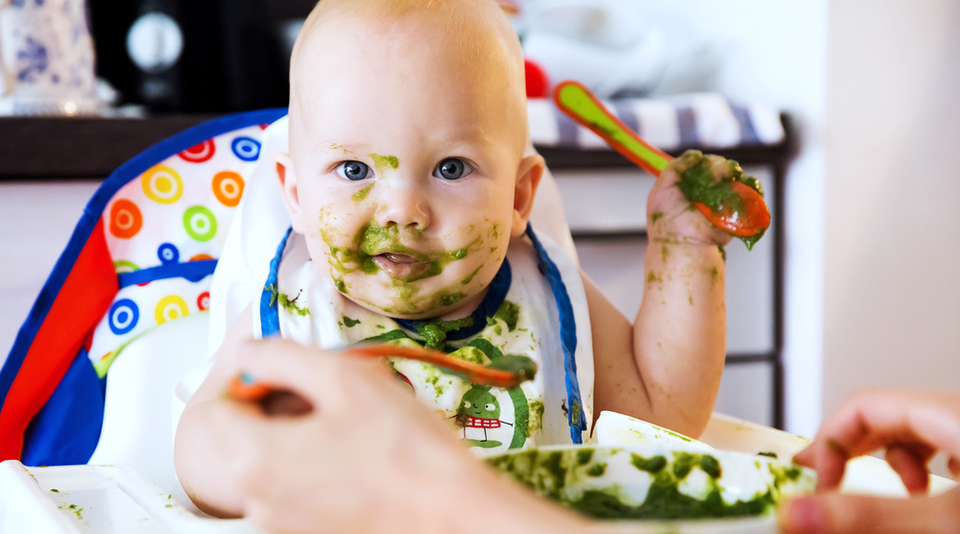
- If they are too long, cut them in half before serving to your baby.
- 1/4 avocado
- 1 large egg
- 1-2 medium sweet potatoes
- 1-3 apples, such as gala, fuji or honeycrisp
- 1-2 cups broccoli florets
- 1/4 cooked salmon
- 1-2 tbsp yogurt, plain whole fat or 2% fat
- 1/2 ripe banana
- 1-2 cups squash
- 1-2 cups green beans, trimmed
Avocado For Baby
For Puree: Simply peel and pit a quarter of a ripe avocado and place on a cutting board. Then with the back of a fork, mash the avocado until smooth.
 You can add in a teaspoon or two of formula or breast milk to make it super smooth and creamy.
You can add in a teaspoon or two of formula or breast milk to make it super smooth and creamy.For Baby-Led Weaning: Cut a slice of avocado off of the pit. Using a small knife, cut into the peel 1/3 of the way up the slice of avocado until you get to the flesh. Peel off 2/3 of the peel and hand baby the peel side of the avocado. This provides a nice handle for baby to hold while they eat the avocado.
Egg for Baby
For Puree: Using a hardboiled egg, peel away the shell and white part of the egg. Then place the cooked egg yolk on a cutting board or baby-safe plate. Using the back of a fork, mash the egg yolk until smooth, adding in a teaspoon or two of breast milk or formula if needed to make it creamy.
For Baby-Led Weaning: Peel a hardboiled egg and then cut into quarters the long way.
Sweet Potato for Baby
For Puree: Peel and chop 1-2 sweet potatoes.
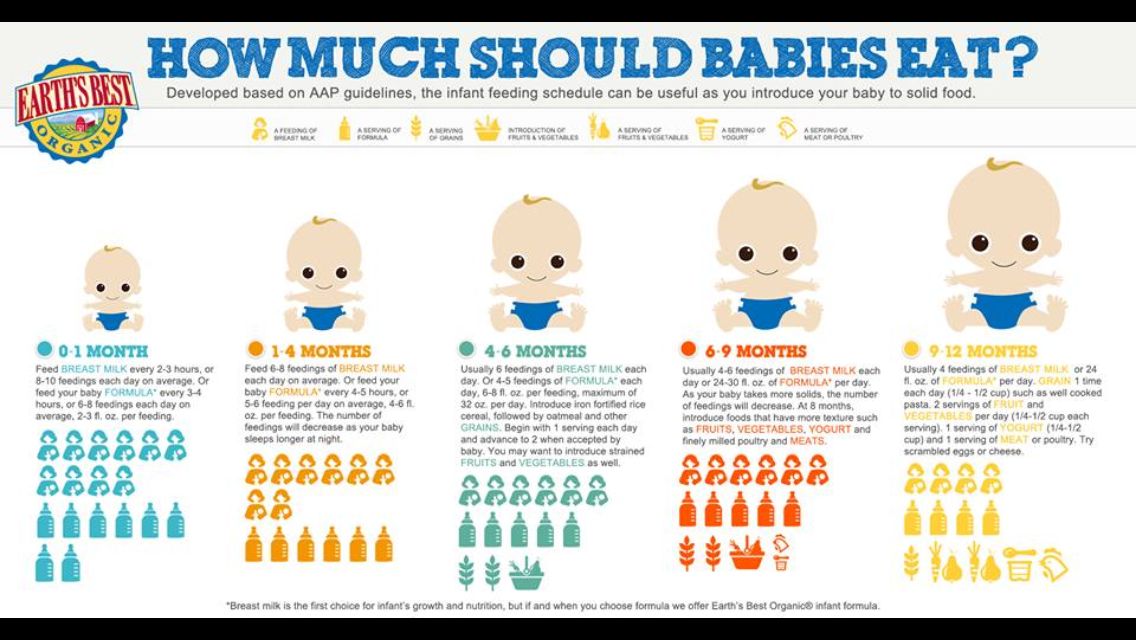 Place in a steamer basket over boiling water and steam for 10-12 minutes or until tender when pricked with a fork. Add cooked sweet potatoes to a food processor or blender, and puree for 1-2 minutes until completely smooth, adding in water in 1/4 cup increments if needed. I had to use 1 cup of water for the puree above.
Place in a steamer basket over boiling water and steam for 10-12 minutes or until tender when pricked with a fork. Add cooked sweet potatoes to a food processor or blender, and puree for 1-2 minutes until completely smooth, adding in water in 1/4 cup increments if needed. I had to use 1 cup of water for the puree above. For Baby-Led Weaning: Peel and slice the sweet potato into long strips that are half an inch thick. Place in a steamer basket and steam for 8-10 minutes or until just tender when pricked with a fork. You want them soft but not overcooked. Overcooked sweet potatoes tend to fall apart when baby fists them. Let cool and serve to baby. Will last 5 days in the fridge.
Apple for Baby
For Puree: Peel and chop 2-3 apples and place in a steamer basket over boiling water and cook for 8-10 minutes or until tender. Transfer the apples to a blender and puree for 1-2 minutes or until smooth, adding in liquid (water, breastmilk or formula) in 1/4 cup increments if needed.

For Baby-Led Weaning: Peel and slice an apple and place in a steamer basket over boiling water for 6-8 minutes or until just tender when pricked with a fork. You want it soft but not falling apart. Let cool and serve to baby. Optional – sprinkle a pinch of cinnamon on apple slices before serving. Steam apple slices will last in the fridge for 3 days, add a squeeze of lemon juice to help them from browning.
Broccoli for Baby
For Puree: Place 2 cups of broccoli florets in a steamer basket over boiling water and steam for 10-12 minutes until tender. Transfer to blender and puree for 1-2 minutes, adding in 1/4 cup of liquid (water, breastmilk or formula) until you have a smooth puree.
For Baby-Led Weaning: Place a cup of broccoli florets into a steamer over boiling water and steam for 8-10 minutes or until tender when pricked with a fork. Let cool and serve to baby in florets or chopped up into “pea” size pieces.

Salmon for Baby
For Puree: I used grilled salmon as that is what I had on hand, but any cooked salmon would work. Place 1/4 cup cooked salmon along with 1 cup cooked sweet potato or squash into a blender and puree for 1-2 minutes, adding in 1/4 cup of liquids (water, breast milk or formula) until smooth. You can really use any fruit or veggie your baby prefers in this recipe. Adding another veggie in the puree helps the salmon blend into a nice smooth puree.
For Baby-Led Weaning: Flake some cooked salmon onto a baby-safe plate or their high chair tray, making sure to pick off any bones. Let baby eat with their hand or with a baby fork.
Yogurt for Baby
For Puree: Place a small spoonful in a bowl and serve to baby.
For Baby-Led Weaning: Place a small spoonful of yogurt into a bowl and load up a self-feeding baby utensil with a small amount of yogurt and hand it over to baby.

Banana for Baby
For Puree: Place half of a ripe and peeled banana on a cutting board and mash with the back of a fork until smooth.
For Baby-Led Weaning: Cut a banana in half, and then gently cut about 2 inches from the stem around the banana. Peel the top off, but leave the banana attached, thus giving baby a handle to hold onto. Hand baby the stem part of the banana for them to hold onto while they eat the banana.
Squash for Baby
For Puree: Place cubed squash (any variety) in a steamer basket and steam for 10-12 minutes or until tender when pricked with a fork. Transfer to a blender and puree for 1-2 minutes on high, adding in liquid (water, breastmilk or formula) in 1/4 cup increments until smooth. You can use frozen or pre-cut squash to make your life a little easier.
For Baby-Led Weaning: Cut long strips of squash and place in a steamer basket over boiling water.
 Steam for 8-10 minutes until tender. Let cool and serve.
Steam for 8-10 minutes until tender. Let cool and serve.
Green Beans for Baby
For Puree: Place two cups of green beans in a steamer basket over boiling water and steam for 8-10 minutes or until tender. Transfer the beans to a blender and puree for 1-2 minutes, adding in 1/4 cup liquid (water, breastmilk or formula) if needed until smooth.
For Baby-Led Weaning: Place a cup of green beans in a steamer basket and steam for 6-8 minutes or until tender when pricked with a fork. Let cool, cut in half if green beans are too long and serve to baby.
Age: 4+ months (stage one)
Storage: Purees can be stored in an air-tight container in the fridge for up to 4 days, and in the freezer for up to 3 months.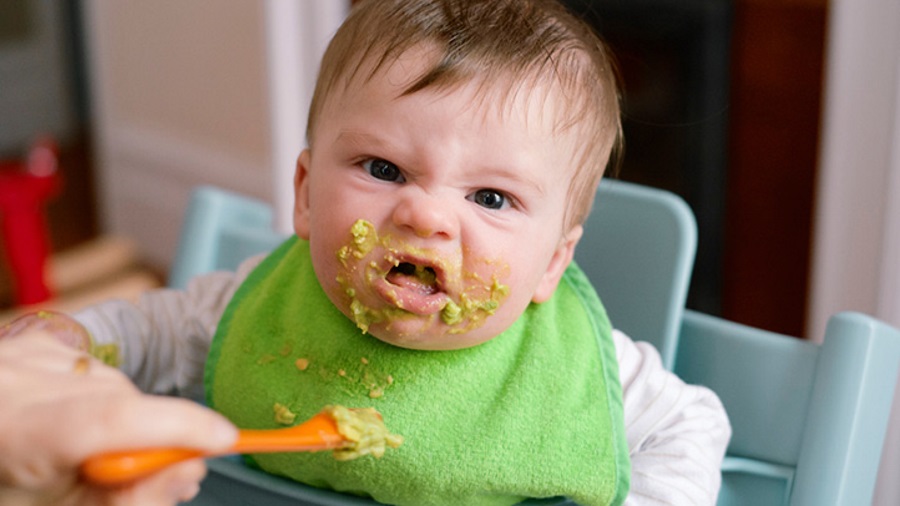 Baby-led weaning foods can be stored in an air-tight container for up to 4 days.
Baby-led weaning foods can be stored in an air-tight container for up to 4 days.
Freezer Tray
Grabease Utensil
Bumkins Baby Bowl
Tripp Trapp High Chair
Did you make this recipe?
Tag @babyfoode on Instagram and hashtag it #babyfoode!
Pin Recipe Email a Friend
how to choose and what kind of baby food is better?
The ideal "baby food" for an infant is breast milk. However, not all mothers can breastfeed their baby, usually this is due to the health of the mother or child. It happens that the woman herself has a serious condition after childbirth and in the early postoperative period, reduced lactation or diseases in which breastfeeding is contraindicated. In such cases, the baby is given formula milk - this is the only alternative to mother's milk. Subsequently, at four to seven months, complementary foods should be introduced into the child's diet, regardless of whether he is breastfed or artificial.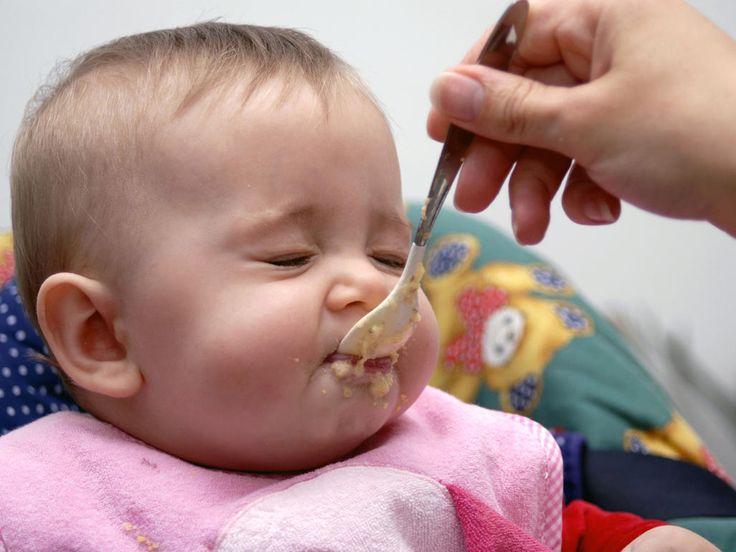 The mother is faced with the task of choosing the right baby food for complementary foods.
The mother is faced with the task of choosing the right baby food for complementary foods.
In this article, we will talk about what foods for babies are and how to choose the best baby food.
Legislation under "baby food" means food products that meet the physiological needs of the body of a child under 14 years of age. And nutrition for young children is food intended for children from birth to three years[1]. It is necessary to make a diet taking into account the age of the baby and the characteristics of his physical condition.
The Union of Pediatricians of Russia created the National Program for feeding children in the first year of life and the National Program for optimizing the nutrition of children from one to three years old [2]. They describe recommendations regarding what formula to feed the baby from birth, how to introduce complementary foods and expand the baby's diet. These programs provide detailed information on what nutrients and nutrients should be included in the diet of children of different ages.
First you need to figure out what kind of baby food is [3]. Products for toddlers can be divided into two categories:
Infant formula. There are for children from birth to six months (formula 1 mixtures, or initial), from six months to a year (formula 2) and from a year (formula 3). The composition of such baby food is adapted, that is, as close as possible to the composition of breast milk.
- In the initial mixtures, the amount of protein is reduced to 1.2-1.5 g / 100 ml - in accordance with the composition of breast milk. They also changed the fat and mineral profile. The initial mixtures are enriched with such an essential amino acid as taurine, and micronutrients, probiotics, vitamins.
- After six months, the baby's need for protein increases, mother's milk changes its composition. And babies on artificial feeding begin to be fed with a more nutritious mixture of formula 2. Taurine is no longer always needed: the body of a baby aged from six months to a year is able to synthesize this amino acid itself.
 Meanwhile, the content of iron, calcium, zinc increases compared to the initial mixtures, because by this age the child's reserves of minerals received from the mother during pregnancy are depleted, and they need to be replenished.
Meanwhile, the content of iron, calcium, zinc increases compared to the initial mixtures, because by this age the child's reserves of minerals received from the mother during pregnancy are depleted, and they need to be replenished. - A child's diet changes after one year - he is already able to eat a variety of solid foods. However, it is advisable to continue to feed him with a mixture, though already formula 3. Pediatricians recommend it as a source of vitamins and minerals that the baby can easily absorb.
Complementary foods As we have already noted, it is introduced when the baby is four to seven months old. This interval is called the "critical window" and is considered optimal for the initiation of complementary foods for several reasons:
- The baby needs a wider range of minerals, vitamins and other nutrients. In addition, his baby's digestive system is already ready to accept more solid and complex foods than mother's milk or infant formula.
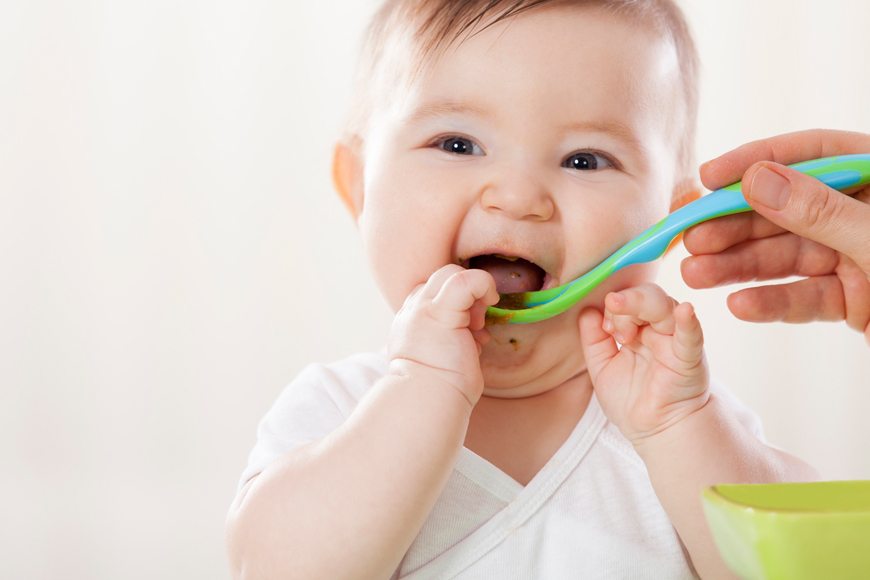
- At this age, the child develops an interest in food, and it is necessary to offer him the right foods to develop his taste.
- During this period, the risk of developing a food allergy to a new product is lower.
- Timely introduction of complementary foods prevents the risk of micronutrient deficiencies and iron deficiency anemia.
Usually the first food is vegetable puree or monocomponent gluten-free cereals, dairy or dairy-free. Over time, cereals containing gluten, supplements from fruits and berries, and also consisting of several cereals are added. A six-month-old child can already be given several types of vegetables and cereals. Also, at about six months, they begin to give meat puree, then fruit, and from eight months - fish. A child from seven months is allowed the yolk.
From the age of 12 months, complementary foods already make up the majority of your baby's diet. At this age, it is especially important to diversify the child's diet: he can be given soups with small pieces of vegetables, meat, fish and cereals.
Information
During the first feeding, the baby's eating habits are laid, and it depends on the parents how correct they will be. Often, mothers introduce fruit juices into complementary foods too early. And because babies have an innate preference for sweet tastes, they can become naughty and stop eating the unsweetened foods they need, especially vegetables. Unhealthy taste habits are formed, which can later provoke obesity.
Domestic doctors are concerned about such irrational nutrition of young children - due to the wrong approach to nutrition, many babies experience a deficiency of vitamins and an excess of fast carbohydrates.
How to choose baby foods
Finding the right foods for your baby is not an easy task. Store shelves are bursting with boxes, jars and bottles, and manufacturers write on every second package that the baby will be healthy, strong and cheerful after feeding. Of course, the baby will receive the necessary substances, no matter what product his parents choose, because all the production of baby food is strictly controlled by the state.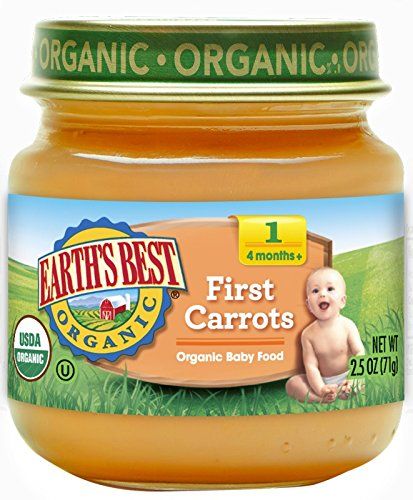 By the way, Russia has some of the most stringent requirements for the quality of baby food in the world.
By the way, Russia has some of the most stringent requirements for the quality of baby food in the world.
However, products for children differ in their properties. It is necessary to select food so that by the end of the first year of life the baby has actively developed chewing skills and an interest in independence, and the diet of complementary foods is reasonably varied.
For children from one to three years of age, the diet should be even more varied. It is important that the child receives daily something new from the main food groups: dairy, vegetables and fruits, meat and fish, cereals, butter and vegetable oil. Of course, the baby's diet should be expanded taking into account his state of health.
When organizing the nutrition of a child from the moment of introduction of complementary foods and up to three years, a mother needs not only to know what can be fed, but also to consider what foods should not be included in the diet. Among the prohibited products for children under three years of age:
- any mushrooms, vegetables and fruits in a marinade;
- pickles, preserves in tomato sauce;
- commercial juice concentrates, carbonated drinks, coffee and strong tea;
- various condiments - mustard, ketchup, hot sauces, horseradish, pepper, vinegar, mayonnaise;
- products containing flavors, industrial colors, including chewing gum;
- margarine and refractory fats - lamb, pork;
- chocolates, sweets and other sweets.
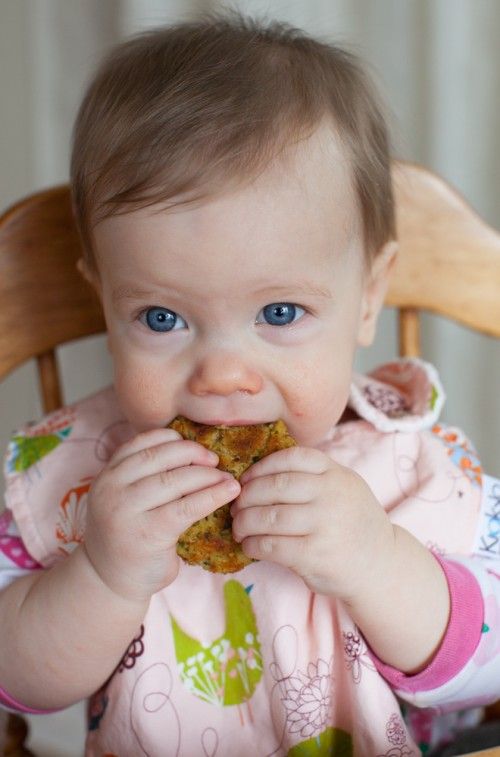
To choose the right baby food, you need to know exactly what you should pay attention to and what you don't need to worry about.
When choosing mixtures, it is important to check:
- Absence of palm oil. Formula manufacturers may use palm oil (more specifically palm extract) because, like breast milk, it is rich in palmitic acid. However, in human milk, palmitic acid is in the beta position, while in palm oil it is in the alpha position. Such alpha-palmitic acid can interfere with the absorption of calcium and fats and is generally less well absorbed by the child's body. This can negatively affect the work of the intestines, lead to constipation, regurgitation. Milk fat is better suited for baby food as a source of palmitic acid[4][5].
- Protein ratio. Breast milk protein is primarily whey proteins and casein. A child needs both types of protein, while proteins are easily digested, which cannot be said about casein.
 If baby food contains a lot of casein, it stays longer in the digestive tract, which can cause problems with the baby's stool.
If baby food contains a lot of casein, it stays longer in the digestive tract, which can cause problems with the baby's stool. - The presence of additional functional elements in the composition - lutein, nucleotides, pre- and probiotics. The task of lutein is to protect vision from ultraviolet rays. Nucleotides are low molecular weight compounds that promote the growth of beneficial bifidobacteria in the intestines. And pre- and probiotics in the composition of infant formulas help to establish comfortable digestion.
When choosing complementary foods, pay attention to:
- Age appropriate. It is important that in the diet of a child under three years of age who receives complementary foods, special children's products predominate - in their composition the components are selected taking into account the age-related needs of the baby's body. It is impossible at an early age to transfer children to "adult" foods like pickles, smoked foods, fast food, and so on.

- Fortified products. It is important that the composition contains vitamins and minerals. The National Child Nutrition Optimization Program recommends choosing complementary foods that contain elements designed to prevent anemia, rickets, and vitamin deficiencies.
- For a varied diet. The menu for a baby up to six months is quite monotonous. But as they grow older, the baby needs more various nutrients - proteins, carbohydrates, fats, vitamins, minerals.
- For the individual reaction of the baby. If the child is already receiving complementary foods, then it is worth introducing a new product only after the previous one has been fully introduced. If the baby is allergic to the product, then it should be administered carefully, carefully checking the reaction of the body.
Ingredient safety testing is optional. Of course, the content of any "chemistry" in the product for feeding a child, whether it be a mixture or complementary foods, is unacceptable.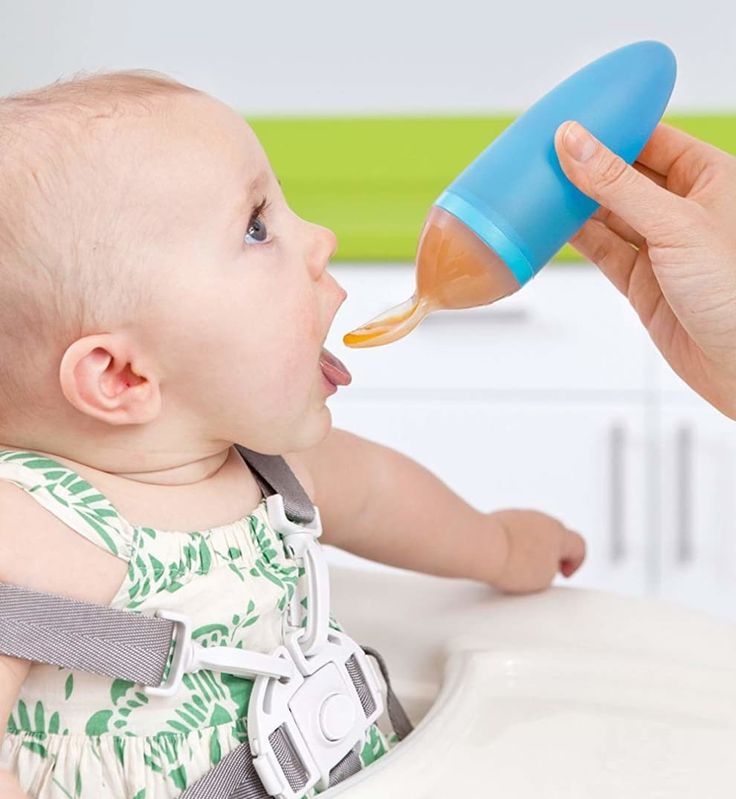 There is no need to worry about this: baby food is carefully checked. If it is registered on the territory of the Customs Union and hit the shelves, then it complies with SanPiN 2.3.2.1940-05 and there will be no "prohibited" components in its composition. Also, contrary to popular misconception, in Russia it is forbidden to use GMOs in children's products.
There is no need to worry about this: baby food is carefully checked. If it is registered on the territory of the Customs Union and hit the shelves, then it complies with SanPiN 2.3.2.1940-05 and there will be no "prohibited" components in its composition. Also, contrary to popular misconception, in Russia it is forbidden to use GMOs in children's products.
Note
Baby food in jars (usually mashed potatoes) has a short shelf life after opening because it does not contain preservatives. However, before the jar is opened, the products can stand for quite a long time on the shelves of stores or in the refrigerator at home. This is possible thanks to a special production technology, sterilization and vacuum packaging. If a soft pop is heard when opening the jar, this is a good sign: the puree is not spoiled. But products in jars with swollen lids or a protruding bottom should not be used: microorganisms already multiply in such food, it is not suitable for food.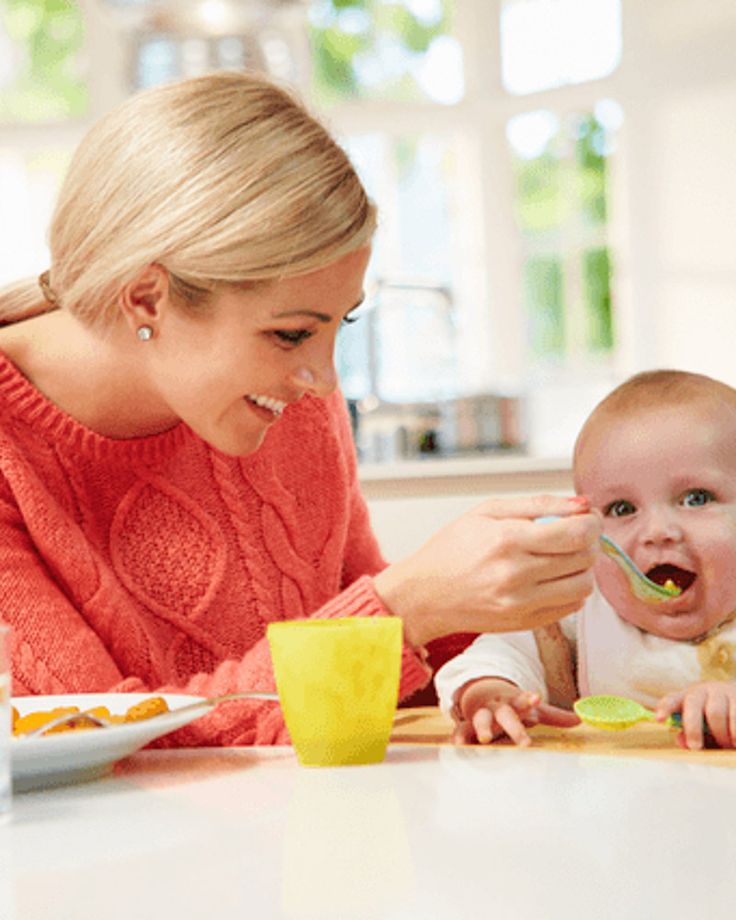
Features of the choice of dairy products
It is necessary to choose dairy products for babies, following the doctor's recommendations. The specialist will take into account the health of the baby, especially if he is allergic to cow protein. In Russia, such an allergy occurs in 30–40% of children [6]. Such a reaction may occur due to hereditary predisposition and immaturity of the organism. But most often, allergies go away when the child grows up.
Goat milk baby food may be a suitable option for young children with a predisposition to allergies. Its protein is perceived by the body better than cow's: alpha-s1-casein, contained in large quantities in cow's milk, makes a product based on it difficult to digest - food stagnates in the baby's gastrointestinal tract, motor skills are disturbed, as a result, allergies often occur. In goat milk, as in breast milk, there is practically no alpha-s1-casein [7]. Therefore, goat's milk, and hence the mixture based on it, are better absorbed.
Of course, with the introduction of complementary foods, other dairy products will appear in the baby's diet. Unadapted fermented milk drinks, such as kefir, yogurt, biolact, can be introduced into the diet from eight months and in an amount not exceeding 200 ml. Also during this period, it is recommended to give cottage cheese - no more than 50 g per day, but according to indications, it can also be prescribed from the age of six months. Whole milk cannot be used as the main food, and it is advised to introduce it into the diet of babies no earlier than a year (in the amount of 100-150 ml per day) [8]. As mentioned above, it must be adapted infant milk or formula 3 formula.
To choose the best baby food, it is necessary to take into account the health of the baby, his tastes, as well as individual reactions of the body. Therefore, before going to the store, you should consult a doctor. The specialist will not only tell you which baby food to choose, but also give recommendations on how to make the child's diet balanced and healthy.
Union of Pediatricians of Russia
0007
Introduction of complementary foods
How to introduce complementary foods correctly is one of the most pressing issues that concern parents.
In the first months of life, the main food for the baby is breast milk or an adapted milk formula, however, as the child grows and develops, this becomes insufficient and it is necessary to think about the introduction of complementary foods.
Your baby is over 4 months old. He has noticeably grown up, become more active, is interested in objects that fall into his field of vision, carefully examines them and reaches for them. The child's emotional reactions have become much richer: he smiles happily at all people, makes various sounds. Perhaps you notice that the child looks into your plate with interest, closely monitors what and how you eat, does this mean that it is time to introduce complementary foods? And where is the best place to start? Let's figure it out!
When should complementary foods be started?
According to the Program for optimizing the feeding of infants in the first year of life in the Russian Federation (2019), the recommended age for the introduction of complementary foods is in the range from 4 to 6 months.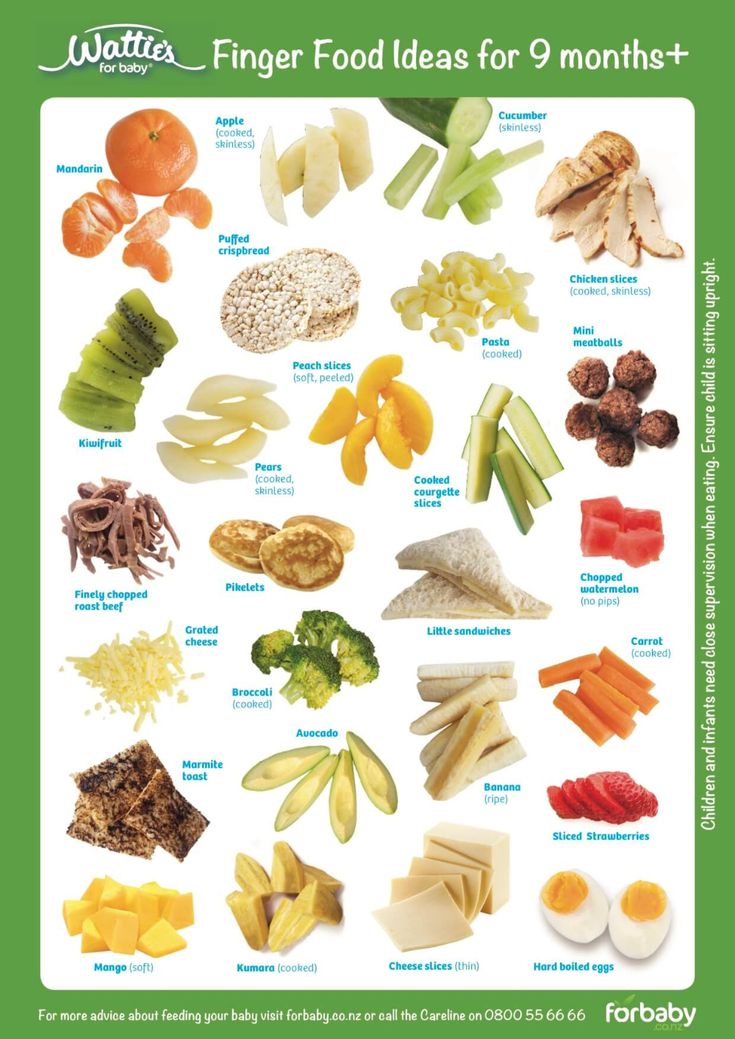
The following points will help determine the readiness of the baby for the introduction of complementary foods:
1. Food interest - you can check its presence as follows: during your meal, give the baby an empty spoon or fork, and if he plays with it, licks it, then there is no food interest yet; but if the child is dissatisfied with the fact that the spoon is empty, food interest has probably appeared. “But how does a child understand that there should be food in a spoon?” Parents often ask. The answer is quite simple: take your baby to the table with you so that he can see how you eat!
2. The child can sit alone or with support. It is unacceptable to feed the child lying down, because he may choke.
3. Extinction of the “pushing out” reflex - when the baby pushes out of the mouth both the offered food and the pacifier, etc.
Why is it not recommended to introduce complementary foods before 4 and after 6 months of life?
Before 4 months of life, the baby is not yet ready to digest food other than breast milk or infant formula. By this age, a number of digestive enzymes mature, a sufficient level of local immunity is formed, which reduces the risk of developing allergic reactions, the child acquires the ability to swallow semi-liquid and thicker food, which is due to the extinction of the “spoon ejection reflex”. The introduction of complementary foods after 6 months can cause a pronounced deficiency of micronutrients (iron, zinc, etc.) and lead to a delay in the formation of chewing skills for thick foods. Too late the introduction of a variety of products increases the risk of allergic reactions. Remember that the timing of the introduction of complementary foods is set individually, taking into account the readiness of the child to accept new foods.
By this age, a number of digestive enzymes mature, a sufficient level of local immunity is formed, which reduces the risk of developing allergic reactions, the child acquires the ability to swallow semi-liquid and thicker food, which is due to the extinction of the “spoon ejection reflex”. The introduction of complementary foods after 6 months can cause a pronounced deficiency of micronutrients (iron, zinc, etc.) and lead to a delay in the formation of chewing skills for thick foods. Too late the introduction of a variety of products increases the risk of allergic reactions. Remember that the timing of the introduction of complementary foods is set individually, taking into account the readiness of the child to accept new foods.
Complementary feeding guidelines:
1. introduce a new product in the first half of the day to track possible reactions to it;
2. cereals, vegetable / fruit / meat purees should be introduced, starting with monocomponent ones, gradually adding other products of this group;
3. start giving a new product with 1/2 teaspoon, gradually increasing the volume to the age norm within a week;
start giving a new product with 1/2 teaspoon, gradually increasing the volume to the age norm within a week;
4. It is not recommended to introduce new products during acute infectious diseases or at some special moments (moving to another apartment, leaving the city, on vacation, illness of parents, etc.).
What is the best way to start complementary foods?
The first complementary food can be anything. Often parents worry that if the child first tries the fruit, then because of its sweet taste, he will refuse other foods. We hasten to reassure you: breast milk is also sweet, so babies may like sweet fruits / berries more, but this does not mean at all that he will refuse vegetables or cereal. Traditionally, they begin to introduce complementary foods in the form of mashed potatoes, but if the child shows interest in “pieces”, then, observing the safety rules, you can give them. Also, along with the introduction of complementary foods, you can offer the child water.
With the start of the introduction of complementary foods, the child is gradually transferred to a 5-time feeding regimen. If the baby shows that he is full and no longer wants to eat (for example, leaning back or turning away from food), then you should not continue to force him to feed, because this can lead to eating disorders in the future. Also, do not force the child to eat as much as possible before bedtime in the hope that he will not wake up for nightly feedings.
Traditionally, in our country, complementary foods begin with vegetables or cereals.
Vegetables: zucchini, broccoli, cauliflower, pumpkin, etc. If the child did not like the dish, for example, broccoli, do not give up on your plan and continue to offer this vegetable in small quantities daily, you can even not once, but 2-3 times, and after a while (7-14 days) the baby will get used to the new taste. This diversifies his diet, will help form the right taste habits in the child.
As for cereals, it is worth starting with dairy-free gluten-free ones - buckwheat, corn, rice. You can use commercial baby food porridge, which is enriched primarily with iron. In addition, such porridge is already ready to eat, you just need to dilute it with water, which will save you a lot of time.
You can use commercial baby food porridge, which is enriched primarily with iron. In addition, such porridge is already ready to eat, you just need to dilute it with water, which will save you a lot of time.
It is also recommended to add oil to food, for example, vegetable puree to vegetable puree, and butter to porridge.
Of meat products, lean meats, such as mashed turkey or rabbit, are most preferred to start complementary foods. Meat puree contains iron, which is easily absorbed, and adding meat to vegetables improves the absorption of this micronutrient from them. Subsequently, the daily use of children's enriched porridge and mashed meat allows you to meet the needs of babies for iron, zinc and other micronutrients.
When introducing fruit purees (apple, pear, peach, prunes, etc.) into your baby's diet, you should pay special attention to the composition of the product - it is important that it does not contain added sugar.
Fish is a source of easily digestible protein and contains a large amount of polyunsaturated fatty acids, including the omega-3 class, as well as vitamins B2, B12, and minerals. Preference should be given to oceanic fish, preferably white (cod, hake, pollock, sea bass, etc.), salmon can be recommended from red, and pike perch from river.
Preference should be given to oceanic fish, preferably white (cod, hake, pollock, sea bass, etc.), salmon can be recommended from red, and pike perch from river.
Fermented milk products are prepared using a special starter culture that breaks down milk protein, so that the baby can get an indispensable set of amino acids in a well-available form. Some foods have added prebiotics, certain vitamins and minerals. Their regular use favorably affects the functioning of the intestines, increases appetite and the absorption of micronutrients.
Recommendations and timing of the introduction of complementary foods for children at risk of developing food allergies and suffering from food allergies are the same as for healthy children. Delayed introduction of highly allergenic foods has previously been recommended to prevent the development of allergic diseases in children at risk. There is now evidence that this practice may lead to an increase rather than a decrease in the incidence of food allergies. The most common highly allergenic foods include cow's milk, chicken eggs, soybeans, wheat, peanuts, tree nuts, shellfish and fish. If a child has a high risk of developing allergies or an existing allergic disease, it is recommended to consult a pediatrician, an allergist-immunologist before introducing highly allergenic products.
The most common highly allergenic foods include cow's milk, chicken eggs, soybeans, wheat, peanuts, tree nuts, shellfish and fish. If a child has a high risk of developing allergies or an existing allergic disease, it is recommended to consult a pediatrician, an allergist-immunologist before introducing highly allergenic products.
By the age of 8 months, when all the main food groups have already been introduced and your baby is improving his skills to eat on his own, special attention should be paid to the diversity of the composition of dishes and the change in the consistency of food - from puree to finely and coarsely ground. Soft foods cut into small pieces (fruits, vegetables, meat, etc.) are perfect for a little gourmet, which diversifies his diet and will contribute to the formation of chewing skills.
By 9-12 months, most babies have the dexterity to drink from a cup (holding with both hands) and to eat foods prepared for other family members. This behavior needs to be encouraged, but combined with regular feeding to meet energy and nutrient requirements.
It is advisable to use industrial products that are designed specifically for young children after a year.
What should not be given to the baby?
It is not recommended to add salt or sugar to food to enhance the taste.
Drinks that should be avoided include fruit juices, whole cow and goat milk (whole milk is not recommended for children under one year old, and even longer, due to a high risk of developing iron deficiency and increased kidney stress), sweet fruit drinks, compotes and carbonated drinks.
Also, some foods should be excluded from the diet of infants: solid round foods (for example, nuts, grapes, raw carrots, raisins, peas, etc.), due to the fact that the child can choke on them.
It is not recommended to eat products with added sugar, for example, confectionery (marshmallow, marshmallow, marmalade, jam, jam, cookies, waffles, etc.), etc.
You should not give your child the meat of large predatory fish (shark, bigeye tuna, king mackerel, swordfish): these types of fish accumulate more harmful substances than others.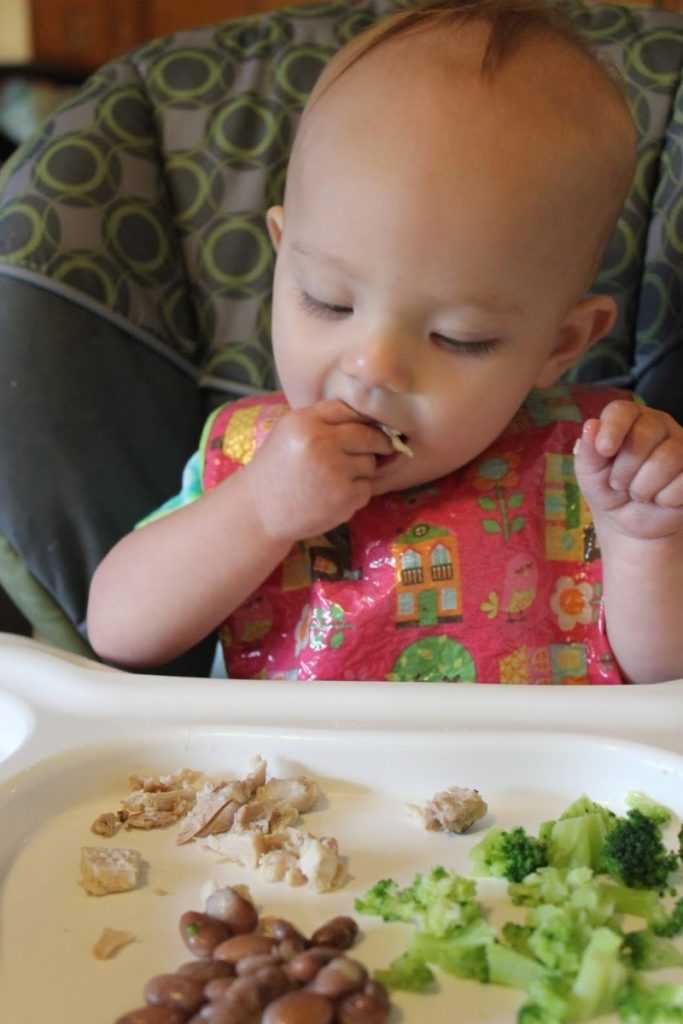
It is forbidden to give honey to children under one year old due to the fact that it may contain spores of Clostridium botulinum bacteria, which in the still immature digestive system of babies are able to multiply, produce toxins directly inside the intestines and, thus, cause infant botulism, which can be fatal. outcome.
Do not give babies raw meat, fish, eggs, caviar, salted fish, soft pickled cheeses because of the risk of intestinal infections.
If you follow all these simple rules, your baby will grow up healthy and happy!
Diets for different ages
References:
1. Methodological recommendations. The program for optimizing the feeding of children in the first year of life in the Russian Federation. [Internet]. - M.: Union of Pediatricians of Russia, 2019. [Methodicheskie rekomendaczii. Programma optimizaczii vskarmlivaniya detej pervogo goda zhizni v Rossijskoj Federaczii. [Internet]. – Moscow: Soyuz pediatrov Rossii, 2019.

